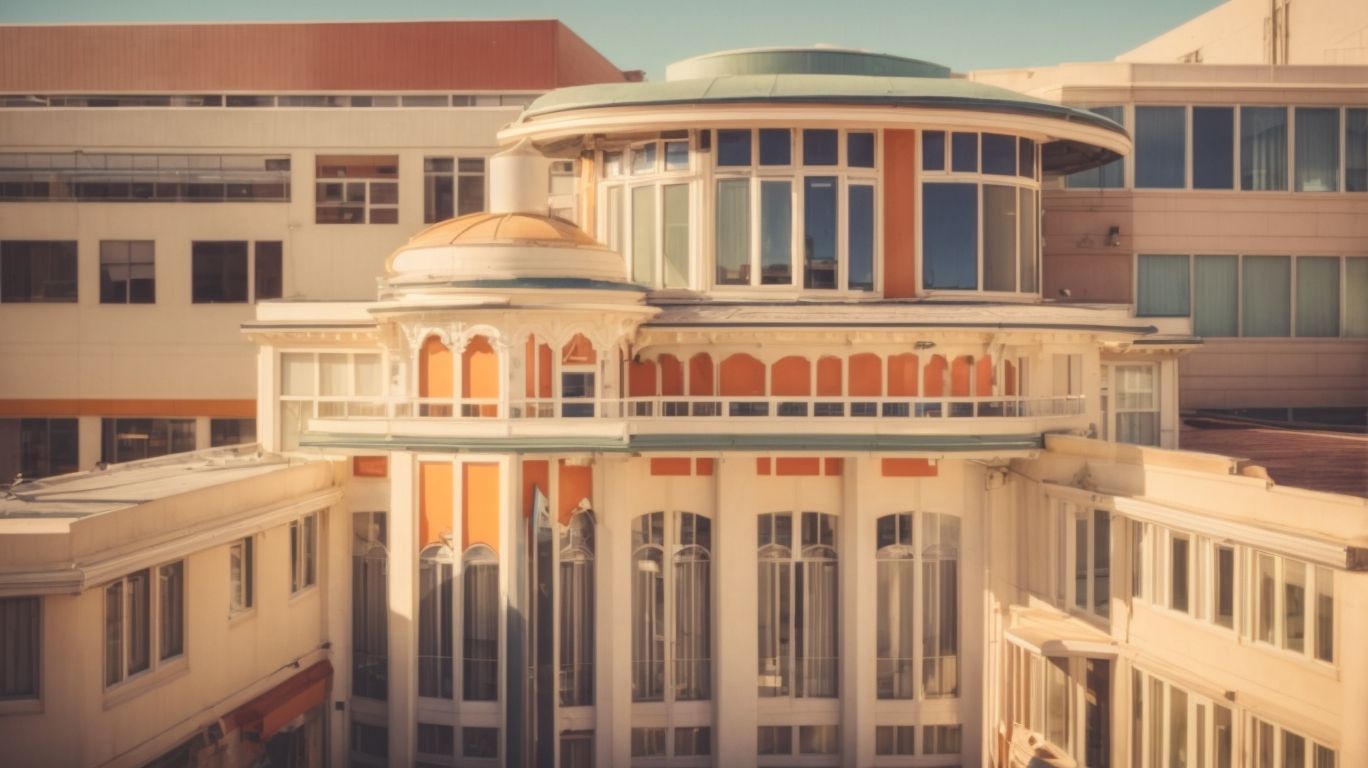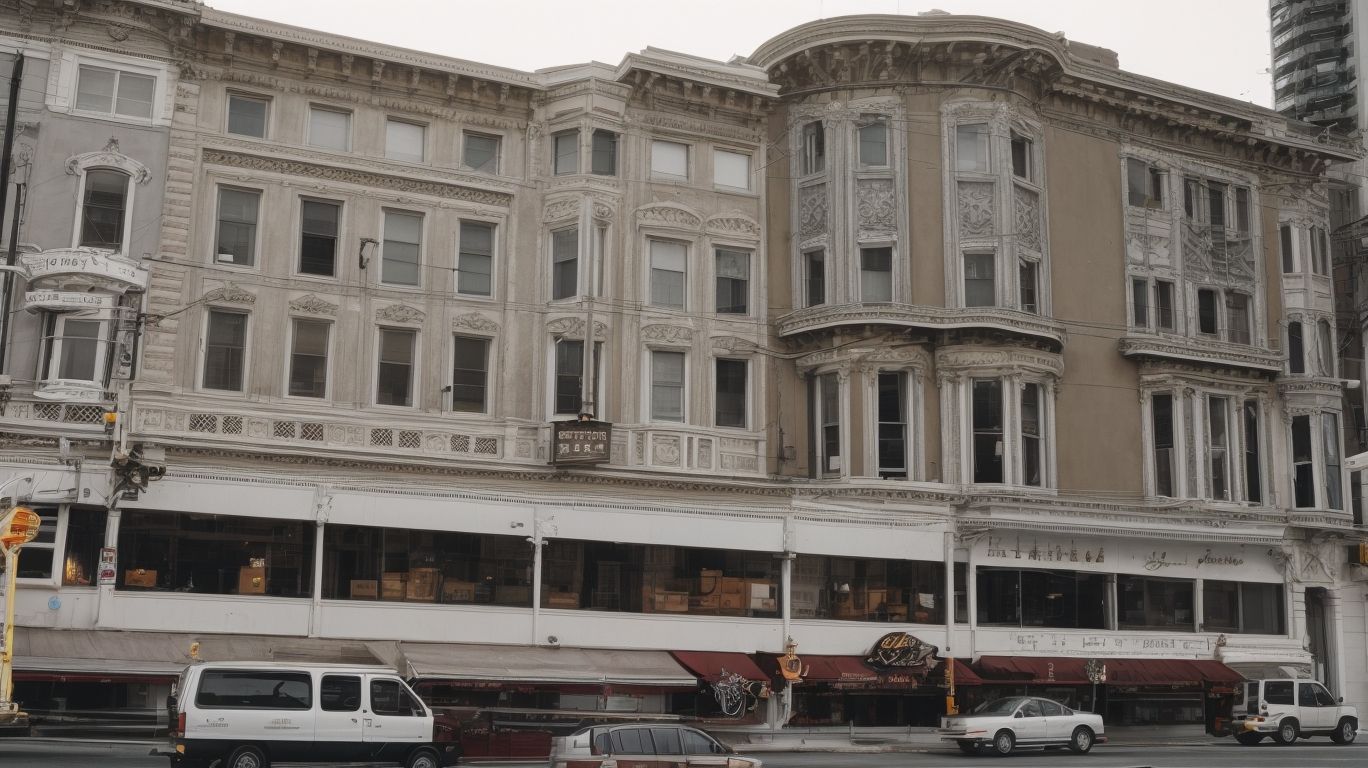
Soft-Story Retrofit Case Studies: Lessons from San Francisco’s Success Stories
Soft-story buildings, characterized by open or weak first floors, are particularly vulnerable to seismic activity. In this article, we will explore the importance of soft-story retrofit, the common types of soft-story buildings, and the causes of their failure.
We will also discuss the benefits of retrofitting, the steps involved, and examine successful case studies in San Francisco, such as The Presidio Landmark and The Cathedral Hill Hotel. By learning from these success stories, we can understand the importance of early action, collaboration, and innovative techniques in ensuring structural safety.
What Is Soft-Story Retrofit?
Soft-story retrofit is a structural engineering solution designed to enhance the resilience and safety of buildings, particularly in seismic hazard-prone regions.
Soft-story retrofitting is a process that reinforces the lower floors of a building, which are typically open spaces like parking lots or storefronts. These areas are particularly vulnerable during seismic events. By strengthening these weak points, soft-story retrofitting greatly reduces the risk of collapse and minimizes potential damage. This makes buildings more resilient and capable of withstanding earthquakes.
This proactive approach not only protects lives and property, but also contributes to community-wide disaster preparedness and the overall stability of urban infrastructure.
Why Is Soft-Story Retrofit Important?
Soft-story retrofit is crucial due to the vulnerability of buildings to seismic hazards, emphasizing the need for compliance with building codes and effective retrofit implementation.
Soft-story retrofitting plays a crucial role in mitigating the risk of collapse during earthquakes, protecting the structural integrity of buildings, and safeguarding the lives of occupants.
By addressing the vulnerabilities of structures through proper retrofitting, it enhances the overall resilience of communities to seismic events. Additionally, soft-story retrofitting helps preserve valuable properties and reduces the economic impact of potential seismic damage, making it an essential aspect of proactive disaster preparedness and risk management.
What Are the Common Types of Soft-Story Buildings?
Soft-story buildings encompass various types, including wood-frame, concrete, and masonry structures, each presenting unique challenges for retrofitting.
Wood-frame soft-story buildings are commonly found with an open ground floor used for parking or retail space, making them vulnerable to structural weaknesses during earthquakes.
Concrete structures, on the other hand, may have large openings for garage parking, which adds to their vulnerability. Masonry soft-story buildings can also present challenges due to weak or inadequate connections between floors and walls, complicating the retrofit process.
Fortunately, there are specific retrofit techniques that can be implemented to address these challenges. These techniques may include adding steel moment frames, reinforced shear walls, or special trusses, tailored to the type of building.
Wood-Frame Buildings
Wood-frame buildings represent a prevalent category of soft-story structures, often found in historical contexts and subject to specific building regulations and retrofit requirements.
These buildings have a significant historical significance, as they played a foundational role in early urban developments.
The unique vulnerabilities of wood-frame structures lie in their open ground floor or soft-story design, making them susceptible to lateral forces during seismic events.
Meeting compliance with building regulations is essential for ensuring the safety and structural integrity of these buildings, and retrofitting measures are necessary to mitigate the risk of collapse and property damage in the event of an earthquake.
Concrete Buildings
Concrete buildings form a substantial portion of soft-story structures, necessitating seismic upgrades and specific building permits for effective retrofit implementation.
Concrete structures are known for their sturdy and durable nature, but this presents a unique challenge when it comes to seismic retrofitting. Their mass and rigidity make it difficult to enhance their structural stability. As a result, building owners and authorities must ensure compliance with seismic codes and regulations. This includes obtaining necessary permits and adhering to building standards, which are crucial steps in mitigating potential risks associated with seismic events.
Retrofitting concrete buildings not only improves their resilience, but also contributes to the overall safety and sustainability of the built environment. By ensuring that these structures can withstand seismic activity, we are creating a safer and more sustainable future.
Masonry Buildings
Masonry buildings present distinct structural vulnerabilities in the context of soft-story retrofit, particularly concerning seismic hazards and the imperative for targeted retrofit interventions.
These vulnerabilities are often further exacerbated by the aging of the building materials and construction techniques, making them more prone to seismic damage.
A comprehensive seismic hazard analysis is crucial in understanding the specific risks posed by these structures and how they may impact their soft-story elements. This analysis provides essential data to inform engineering strategies for identifying and implementing effective retrofit solutions tailored to the unique characteristics of masonry buildings.
What Are the Causes of Soft-Story Failure?
Understanding the causes of soft-story failure is imperative for assessing retrofit effectiveness, seismic performance, and enhancing building stability in vulnerable structures.
Soft-story failure can be caused by a variety of factors, such as inadequate lateral bracing, weak connections between structural components, and insufficient load-bearing capacity of the ground floor. These vulnerabilities can greatly compromise a building’s structural integrity during seismic events, highlighting the importance of effective retrofit strategies.
By addressing these underlying causes, engineers can strengthen a structure’s resilience and reduce the risk of catastrophic failure. This not only ensures the safety of occupants, but also promotes the long-term stability of the building.
What Are the Benefits of Soft-Story Retrofit?
Soft-story retrofit offers multifaceted benefits, encompassing risk mitigation, enhanced building safety, and the realization of retrofit advantages in seismic hazard-prone regions.
Soft-story retrofitting is a crucial measure in addressing vulnerabilities in structures with open or weak ground floors. This significantly reduces the risk of collapse during earthquakes, protecting the lives of occupants and preserving property.
Moreover, retrofit interventions contribute to the overall resilience of communities. By enhancing building safety, structures are better equipped to withstand seismic events, minimizing the potential for widespread damage and disruption.
Increased Structural Safety
Soft-story retrofit significantly enhances the structural safety of buildings, elevating their seismic performance through targeted structural reinforcements and retrofit interventions.
Soft-story buildings are at a higher risk of structural failures during earthquakes due to their inherent vulnerabilities. Retrofit measures, such as adding steel frames or shear walls, can greatly improve the building’s ability to withstand seismic forces. These interventions not only enhance structural integrity but also increase the building’s resilience, ensuring the safety of occupants and preserving its functionality.
Improved Property Value
Soft-story retrofit contributes to improved property value, often qualifying for retrofit incentives and facilitating valuable building upgrades that enhance market appeal.
This proactive approach not only enhances the safety and resilience of the structure but also positively impacts the overall value of real estate assets.
With cities increasingly promoting retrofit programs, property owners can benefit from grants or low-interest loans to help cover the costs of these upgrades.
As a result, retrofitting soft-story buildings can attract more discerning buyers and tenants who are keen on investing in well-maintained and seismically robust properties, thereby bolstering the market value of the entire neighborhood.
Compliance with Building Codes
Soft-story retrofit ensures compliance with stringent building codes, necessitating proactive measures and adherence to specific building permits and regulations for comprehensive retrofit compliance.
This retrofitting process plays a critical role in addressing the vulnerabilities of soft-story buildings, which are susceptible to structural damage during seismic events.
By meeting the requirements set forth by building codes and regulations, property owners not only enhance the safety of their structures but also contribute to the overall resilience of the community.
It provides assurance that the building’s structural integrity aligns with the necessary standards, emphasizing the significance of ensuring a safe and secure built environment for occupants.
What Are the Steps Involved in Soft-Story Retrofit?
The process of soft-story retrofit encompasses critical stages, including structural evaluation, retrofit construction, and adherence to specific retrofit guidelines and building permit requirements.
Structural evaluation is a crucial first step, involving a thorough assessment of the building’s existing condition to identify vulnerabilities.
Retrofit construction then follows, which typically involves strengthening the structure through techniques such as adding steel frames or shear walls.
Adhering to specific retrofit guidelines and obtaining building permits is imperative to ensure that the retrofit work complies with the necessary safety standards and codes.
These measures are essential for enhancing the seismic resilience of soft-story buildings, protecting occupants and the surrounding community from potential structural vulnerabilities during seismic events.
Structural Evaluation
Structural evaluation serves as a foundational stage in soft-story retrofit, encompassing comprehensive seismic analysis and detailed building assessments to identify retrofit priorities.
This critical process involves a thorough examination of the building’s existing structural elements to understand their capacity to withstand seismic forces and determine the most effective retrofit strategies.
Structural evaluation allows engineers to assess potential vulnerabilities, such as weak connections or inadequate load paths, which are vital in prioritizing retrofit measures.
By integrating advanced analytical techniques and evaluating the overall structural integrity, stakeholders can make informed decisions that optimize the building’s resilience to seismic events, thereby enhancing public safety and minimizing potential damage.
Design and Permitting
The design and permitting phase in soft-story retrofit involves meticulous adherence to retrofit standards, rigorous building inspections, and the formulation of comprehensive retrofit designs that align with regulatory requirements.
This phase is essential in ensuring the safety and stability of the building during seismic events. It is crucial for engineers and architects to consider various factors such as building codes, material specifications, and load capacities during the design process.
Building inspection protocols play a pivotal role in verifying the structural integrity and compliance with retrofit standards. Any deviations from the prescribed retrofit requirements can lead to delays in the permitting process, underscoring the significance of strict adherence to design guidelines and regulatory mandates.
Construction
The construction phase of soft-story retrofit integrates advanced retrofit technologies, meticulous building maintenance considerations, and the implementation of strategic retrofit solutions to fortify building resilience and safety.
This phase requires a cohesive approach, where structural enhancements, such as shear walls and moment frames, are carefully incorporated to strengthen the building’s structural integrity.
The integration of modern seismic design principles and materials is pivotal in enhancing the overall retrofit effectiveness. The coordination of retrofit activities with ongoing building maintenance imperatives ensures that the retrofit process aligns seamlessly with the building’s operational requirements, optimizing its long-term resilience.
What Are Some Successful Soft-Story Retrofit Case Studies in San Francisco?
San Francisco has witnessed several successful soft-story retrofit case studies, demonstrating the efficacy of retrofit strategies and the critical success factors in implementing seismic resilience measures.
These case studies have highlighted the effectiveness of various retrofit techniques such as adding steel moment frames, installing shear walls, and strengthening foundations. Key success factors in these projects included thorough structural assessments, accurate risk evaluation, and seamless collaboration between engineers, contractors, and building owners.
The incorporation of seismic design principles and adherence to local building codes played a pivotal role in ensuring the long-term safety and stability of these retrofitted structures, thus underscoring the importance of proactive retrofitting initiatives in earthquake-prone regions like San Francisco.
The Presidio Landmark
The Presidio Landmark stands as a prominent soft-story retrofit success story in San Francisco, marked by rigorous retrofit evaluations and proactive seismic monitoring to ensure structural integrity.
This exemplary case study demonstrates the effective measures undertaken to maintain the structural integrity of the building. The retrofit evaluations were conducted with thorough attention to detail, identifying areas requiring reinforcement and implementing strategic solutions.
Seismic monitoring played a pivotal role in continuously assessing the building’s stability and promptly addressing any potential risks. The collaborative efforts of engineers, architects, and construction professionals resulted in a successful retrofit that not only met safety standards but also preserved the historical significance of The Presidio Landmark.
The Cathedral Hill Hotel
The Cathedral Hill Hotel exemplifies effective soft-story retrofit implementation, showcasing compliance with building codes, rigorous retrofit reviews, and the successful realization of seismic resilience measures.
This case study serves as a testament to the importance of proactive measures to strengthen buildings against seismic risks. It highlights the significance of thorough retrofit planning and execution, emphasizing the critical role of building code adherence in ensuring structural integrity and safety.
The successful implementation of seismic resilience measures at the Cathedral Hill Hotel sets a valuable precedent for similar retrofit projects. This underscores the impact of strategic planning and careful execution in achieving enhanced structural resilience, demonstrating the positive effects on buildings in seismically active regions.
The Mission Dolores Basilica
The Mission Dolores Basilica represents a notable soft-story retrofit success story, characterized by meticulous retrofit construction, and the fortification of seismic resistance to safeguard the historical building.
Located in an earthquake-prone region, this building required a comprehensive approach that integrated advanced engineering techniques while preserving its rich heritage.
The retrofit construction carefully balanced modern structural enhancements with the preservation of its architectural integrity, highlighting the importance of proactive measures in mitigating seismic risks without compromising the building’s historical significance.
What Lessons Can Be Learned from These Success Stories?
The successful soft-story retrofit case studies in San Francisco offer valuable lessons, revealing effective retrofit strategies, the mitigation of retrofit challenges, and the imperative for proactive seismic retrofits to ensure building resilience.
These success stories demonstrate the significance of thorough structural assessments and engineering analyses in identifying vulnerabilities and designing appropriate retrofit solutions.
The coordinated efforts between building owners, engineers, and local authorities showcase the significance of strong partnerships in the successful implementation of retrofit measures.
The use of advanced retrofit technologies and materials has been instrumental in enhancing the structural integrity of buildings, further underlining the importance of staying updated with the latest advancements in seismic retrofit practices.
Importance of Early Action
The success stories underscore the importance of early action in soft-story retrofit, showcasing its positive impact on seismic performance and the facilitation of proactive building adaptations to seismic hazards.
This highlights the critical role of foresight and strategic planning in ensuring the structural integrity of buildings in earthquake-prone regions.
By addressing vulnerabilities in soft-story buildings before they become a major concern, communities can effectively reduce the risk of devastation and loss during seismic events.
Emphasizing early action not only enhances safety and resilience but also allows for the implementation of cost-effective measures, proving the tangible benefits of proactive retrofitting in safeguarding communities against seismic threats.
Collaboration between Building Owners and Engineers
The collaborative efforts between building owners and engineers emerge as a pivotal lesson from the success stories, showcasing the effective mitigation of seismic vulnerability through proactive partnership and expertise synergies.
This collaboration plays a crucial role in identifying potential soft-story retrofit needs and implementing tailored solutions that address the specific vulnerabilities of each building.
By combining the in-depth knowledge of building owners regarding their structures with the technical expertise of engineers, the retrofit process becomes more comprehensive and impactful.
This partnership fosters a deeper understanding of seismic risk, leading to informed decisions and more resilient buildings in seismically active regions.
The amalgamation of insights and skills ultimately results in cost-effective and sustainable retrofit solutions, safeguarding communities from potential seismic hazards.
Utilization of Innovative Techniques
The success stories highlight the utilization of innovative techniques in soft-story retrofit, showcasing their effectiveness in addressing seismic hazards, adherence to retrofit guidelines, and the realization of resilient structural enhancements.
These advanced methods not only offer cost-effective solutions but also ensure the structural stability of buildings in earthquake-prone areas.
By integrating cutting-edge technologies and engineering principles, such retrofits effectively mitigate potential damage, safeguarding lives and properties.
The use of these techniques underscores the commitment to meeting and surpassing stringent retrofit standards set forth by regulatory bodies, fostering a culture of safety and resilience within communities.
The outcomes also underscore the transformative potential of innovative retrofit strategies in fortifying structures against unforeseen seismic events, enabling buildings to withstand and recover from significant natural forces.




No Comments